-

20 Richest Communities
Portland
Median Income: $52,657
Population: 594,687
Job growth in Portland is up 2.9 percent, making it the 5th top U.S. for job growth, according to a study by Forbes
* Data is compiled from the U.S. Census Bureau's American Community Survey 2009-2013
-
_(desD0054b)_400_400_90.jpg)
19.
Bend
Median Household Income: $53,027
Population: 78,128
Despite a housing bubble that devastated the local economy, Bend has been recovering. In 2013, Bend’s economy grew faster than Portland’s, according to economic report by the State of Oregon.
Photo Credit: Gary Halvorson via Wikimedia Commons (image cropped)
-

18.
Gladstone
Median Household Income: $54,353
Population: 11,602
Gladstone sits 8 miles south of downtown Portland, between I-205 and 99E. The city’s economic development goals include the redevelopment of its downtown, which will include new housing, expanded shopping and restaurants.
Photo Credit: M.O. Stevens via Wikimedia Commons (image cropped)
-

17.
Beaverton
Median Household Income: $56,107
Population: 91,383
Beaverton is the 6th largest city in the state. It was ranked one of the “100 most desirable places to live in the US” by Money Magazine. Job and economic growth in Beaverton and other Washington County suburbs has traditionally outpaced growth in Portland.
Photo Credit: Ajbenj via Wikimedia Commons (image cropped)
-
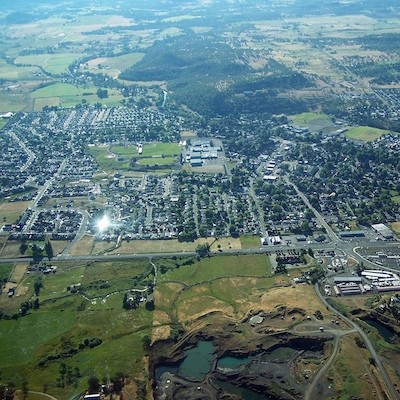
16.
Eagle Point
Median Household Income: $56,309
Population: 8,520
The small Jackson County town is located just northeast of Medford. One of the town’s largest features is the Robert Trent Jones Jr., designed Eagle Point Golf Course. “The course is an 18-hole, par 72 with four sets of tees and a championship length of 7,099 yards." Golf Digest ranks Eagle Point as the sixth best publicly accessible course in the State of Oregon,” according to the city’s website.
Photo Credit: By Little Mountain 5 via Wikimedia Commons (image cropped)
-
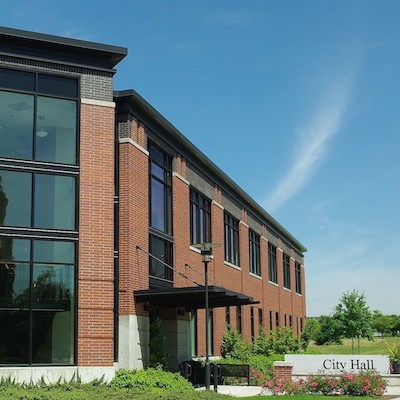
15.
Wilsonville
Median Household Income: $56,430
Population: 19,636
Wilsonville, at the southern edge of the Portland Metro urban growth boundary, has consistently been one of Oregon’s ten fastest growing communities. The town’s population had grown by 97 and 39 percent according to the 2000 and 2010 census, respectively. The largest demographic group in the town are people aged 20 to 39.
Photo Credit: By M.O. Stevens via Wikimedia Commons (image cropped)
-
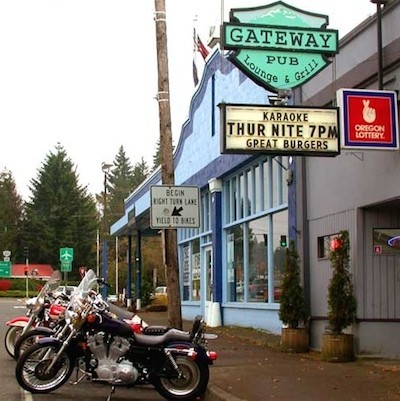
14.
Sandy
Median Household Income: $57,012
Population: 9,737
Sandy, the gateway to Mt. Hood, sits along the river for which it is named. From its past as a timber town, Sandy grew as a destination for outdoor adventurers, recently adding a new high school.
Photo Credit: Decumanus via Wikimedia Commons (image cropped)
-
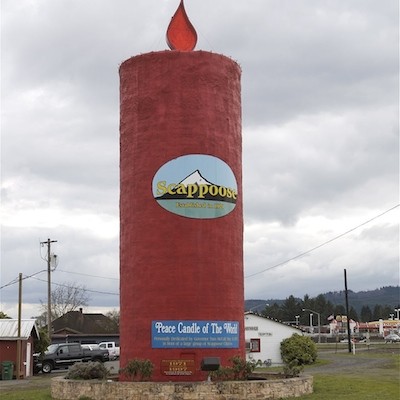
13.
Scappoose
Median Household Income: $57,239
Population: 6,716
Scappoose, roughly halfway between Portland and St. Helen’s, is still home to a gravel mine, shoe factory and Oregon Aero, although many residents now commute to Portland for work. The town boasts the Peace Candle of the World.
Photo Credit: Cacophony via Wikimedia Commons (image cropped)
-

12.
Canby
Median Household Income: $57,931
Population: 16,561
Just north of Salem, Canby sits in the scenic North Willamette Valley. Historically known for its farming, Canby’s crops include berries, asparagus, flowers, dairy products and livestock. The city even offers a 20-farm tour.
Photo Credit: Public Domain via Wikimedia Commons (image cropped)
-
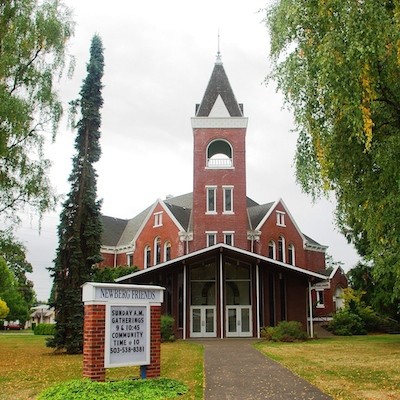
11.
Newberg
Median Household Income: $59,528
Population: 22,291
Newberg’s biggest employers are spread between Christian University George Fox, dental equipment manufacturer A-dec. The city is within commuting distance of Portland.
Photo Credit: M.O. Stevens via Wikimedia Commons (image cropped)
-
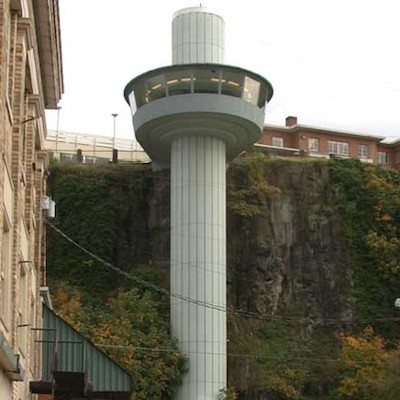
10.
Oregon City
Median Household Income: $60,223
Population: 33,115
As the last stop on the Oregon Trail, Oregon City was once the hub of the Oregon Territory, chosen for its position at the confluence of the Willamette and Clackamas Rivers, near Willamette Falls Lock. The timber industry played a major role in the town, with several mills operating nearby in recent decades. With the fall of the lumber, Oregon City has become home primarily to light manufacturing and tech, with roughly a 30 minute commute to Portland.
Photo Credit: By Decumanus via Wikimedia Commons (image cropped)
-
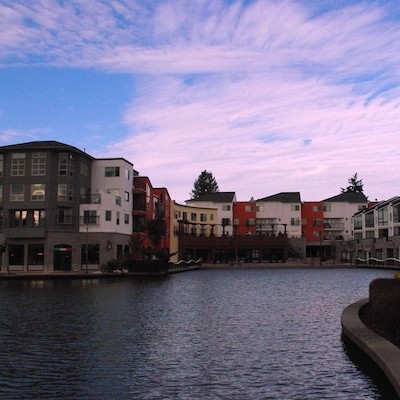
9.
Tualatin
Median Household Income: $61,250
Population: 26,383
The economic powerhouse of the commuter suburb south of Portland is arguably the upscale Bridgeport Village Mall, which opened in 2005. The mall's 18-screen movie theatre, restaurants and shops drive thousands to the area, conveniently located on I-5.
Photo Credit: Aboutmovies via Wikimedia Commons(image cropped)
-
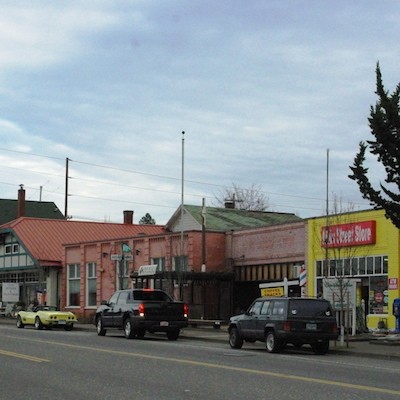
8.
Tigard
Median Household Income: $61,758
Population: 49,024
Another commuter suburb, but larger than neighboring Tualatin, Tigard lays claim to the Washington Square Mall and a portion of the Bridgeport Village Mall. The city sits roughly a 15-minute drive from Portland (depending on traffic). A handful of companies, such as Gerber and Stash Teas, have their headquarters here.
Photo Credit: M.O. Stevens via Wikimedia Commons (image cropped)
-
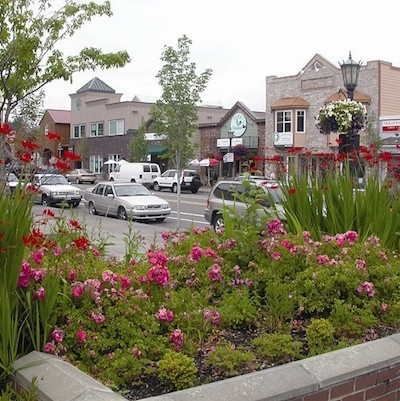
7.
Troutdale
Median Household Income: $62,326
Population: 16,188
Mount Hood was given its name by a member of Captain George Vancouver's expedition in what is now Troutdale, in 1792. The town is roughly 20 minutes from Portland, towards the Columbia River Gorge. Troutdale had one of the state's first female Mayors.
Photo Credit: West Columbia Gorge Chamber of Commerce via Wikimedia Commons (image cropped)
-
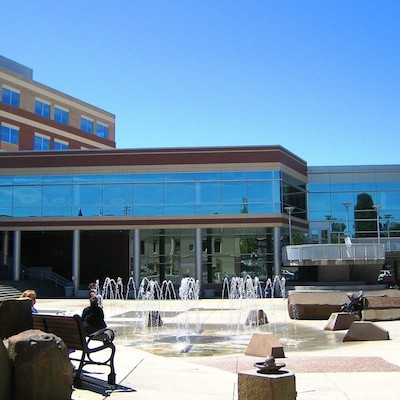
6.
Hillsboro
Median Household Income: $65,158
Population: 93,880
Hillsboro, just west of Portland, is home to tech giant Intel, and serves as a commuter suburb for Nike employees in neighboring Beaverton.
Photo Credit: Public Domain via Wikimedia Commons
-
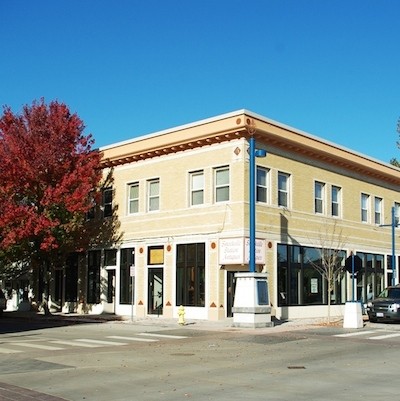
5.
Sherwood
Median Household Income: $78,355
Population: 18,441
South of Portland, Sherwood was home to a brickyard for nearly one hundred years until it closed in the 1970s. The economy shifted to include a fruit and vegetable cannery, and leather tanning.
Photo Credit: Public Domain via Wikimedia Commons (image cropped)
-
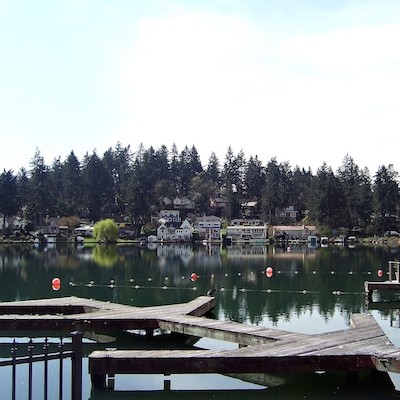
4.
Lake Oswego
Median Household Income: $83,625
Population: 37,037
The town has long had the reputation as one of the Metro areas’ wealthiest communities. The city has the state’s top high school, according to GoLocalPDX’s 2013 rankings.
-
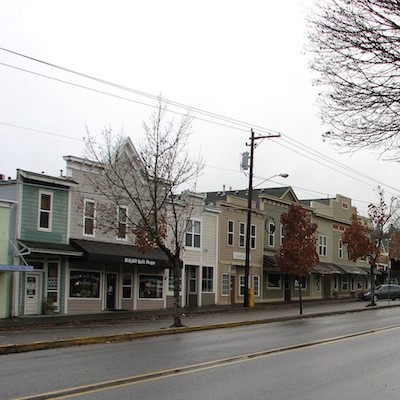
3.
West Linn
Median Household Income: $84,519
Population: 25,462
The semi-rural bedroom community of Portland directly across from Oregon City has been home to a number of Trailblazers. Steve Blake, Nate McMillian, Brandon Roy and Monty Williams have all lived there.
Photo Credit: Ulmanor via Wikimedia Commons (image cropped)
-
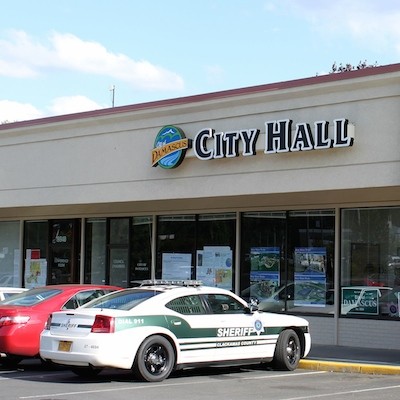
2.
Damascus
Median Household Income: $89,077
Population: 10,626
This rural area on the eastern edge of the metro area has had a contentious past. The city was formed out of an incorporated area, in part, to fight off Metro’s plans to develop the area. Since that time, the area has struggled to build consensus around a landuse plan required by state law of all municipalities. In Nov. a movement to disincorporate the city failed just a few votes.
Photo Credit: Tedder via Wikimedia Commons (image cropped)
-

1. Happy Valley
Happy Valley
Median Household Income: $92,773
Population: 14,931
The city off I-205 just east of the Willamette National Cemetery is the state’s wealthiest town, according to the U.S. Census. Happy Valley's median household income has only grown by 3.78 percent since 2000. The income growth rate is lower than Oregon’s average rate of 22.29 percent, according to USA.com
Photo Credit: Esprqii via Wikimedia Commons (image cropped)
-
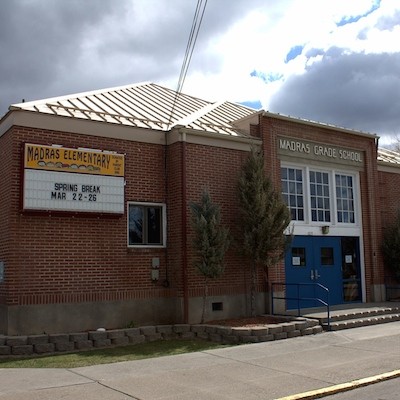
20 Poorest Communities
Madras
Median Household Income: $38,934
Population: 6,263
Madras, in central Oregon's Jefferson County, sits just to the east side of Mt. Hood. The economy hinges on agriculture, and several airports, including a heliport. The actor River Phoenix was born in Madras.
Photo Credit: Tedder via Wikimedia Commons (image cropped)
-
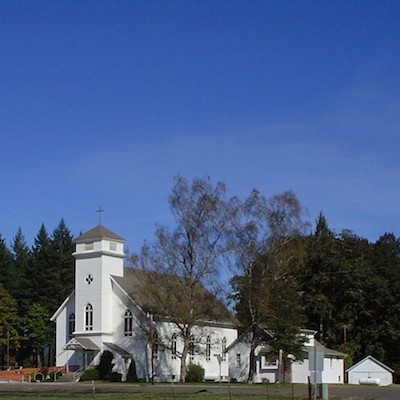
19.
Stayton
Median Household Income: $38,536
Population: 7,690
Just 14 miles southeast of the state capitol, Stayton provides an easy commute to Salem. The region's industries include agriculture and manufacturing. To the Northeast, Silver Falls State Park, the largest state park in Oregon, is a major tourist draw.
Photo Credit: Public Domain via Wikimedia Commons (image cropped)
-

18.
Junction City
Median Household Income: $37,377
Population: 5,505
The Lane County city drew media buzz in 2003 when a group of men posed nude for a calendar to raise money for the local school in the face of budget cuts.The town's initial intention of being the junction between the state's east and west railway lines was never realized. Junction City is home to a range of dairy and Christmas tree farms.
Photo Credit: Bruce Fingerhood via Wikimedia Commons (image cropped)
-
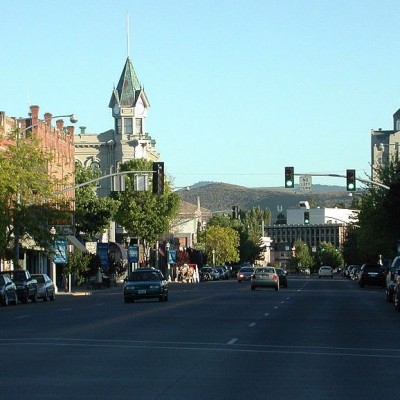
17.
Baker City
Median Household Income: $37,243
Population: 9,774
Baker City is the county seat of Baker County, in far eastern Oregon. Its unemployment rate is 20 percent. The City's motto is "On the Historic Oregon Trail."
Photo Credit: Finetooth via Wikimedia Commons (image cropped)
-
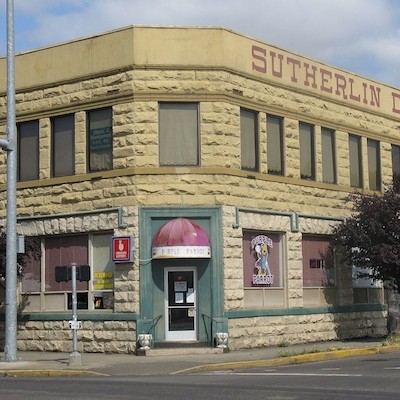
16.
Sutherlin
Median Household Income: $36,532
Population: 7,766
Between Roseburg and Eugene, Sutherlin's unemployment rate is more than three percent higher than the national average, at 9.9. Sutherlin is near the Copper Creek Reservoir, and the Umpqua Golf Resort.
Photo Credit: Publichall via Wikimedia Commons (image cropped)
-
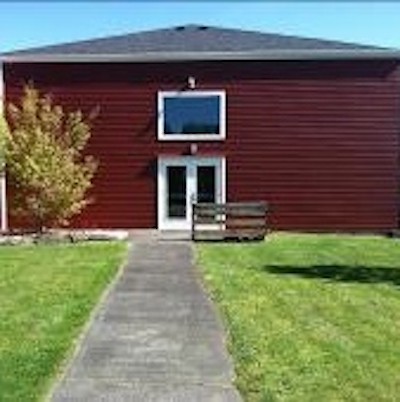
15.
Warrenton
Median Household Income: $36,266
Population: 5,057
Ten minutes from nearby Astoria, Warrenton has two charter fishing boat ports. The city was originally built on tidal flats.
Photo Credit: City of Warrenton Website (image cropped)
-
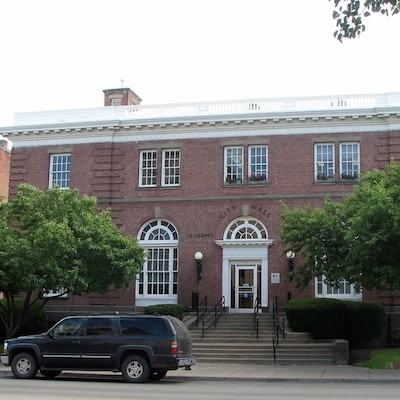
14.
La Grande
Median Household Income: $35,860
Population: 13,114
La Grande is the county seat of Union County, south of Pendleton in eastern Oregon. Goldmines brought settlers to the region in the 1800s, but it is now the home of Eastern Oregon University.
Photo Credit: Ian Poellet (User:Werewombat) via Wikimedia Commons (image cropped)
-

13.
Coos Bay
Median Household Income: $34,870
Population: 15,982
Coos Bay is the largest city on the Oregon Coast. Its economy relies on tourism, lumber, agriculture and small businesses. However, a plan to build a multi-billion dollar liquefied natural gas terminal at nearby Jordan Cove is in early stages of development.
Photo Credit: Debbie Tegtmeier via Wikimedia Commons (image cropped)
-

12.
Talent
Median Household Income: $34,797
Population: 6,123
Sitting in the southern region of Jackson County, Talent is roughly five miles from the college town of Ashland, which is known for its Shakespeare festival. Homeowners pay their taxes to Jackson County, not to the city of Talent.
Photo Credit: Talent Oregon Parks and Recreation (image cropped)
-
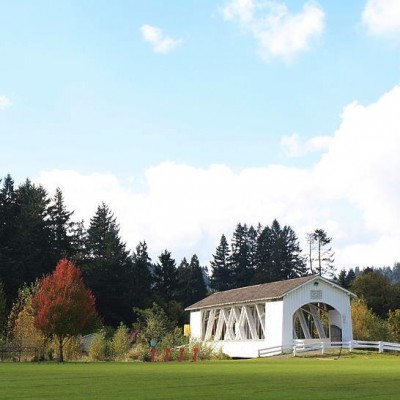
11.
Sweet Home
Median Household Income: $34,443
Population: 9,000
Scenic Sweet Home is known as the "gateway to the Santiam playground," a pass in the Cascade Mountains. Howevever, 25 percent of people in Sweet Home were below the poverty line at the time of the last census.
Photo Credit: Sword Fern via Wikimedia Commons (image cropped)
-
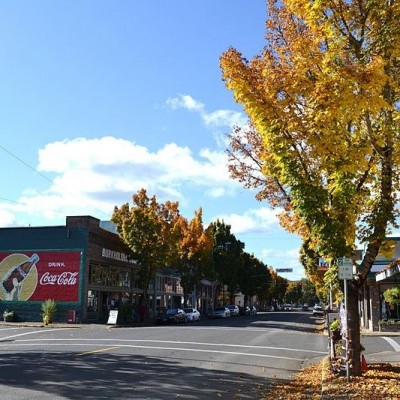
10.
Cottage Grove
Median Household Income: $34,325
Population: 9,734
Cottage Grove is the third largest city in Lane County and sits just south of Eugene. The city is nationally known as the "Covered Bridge Capital of Oregon."
Photo Credit: Visitor7 via Wikimedia Commons (image cropped)
-
_400_400_90.jpg)
9.
Lincoln City
Median Household Income: $33,808
Population: 7,968
In Northwest Oregon, Lincoln city is one of the state's hot spots for coastal tourism. The city is known for its outlet mall and Chinook Winds Casino.
Photo Credit: Justin Lonas via Wikimedia Commons(image cropped)
-
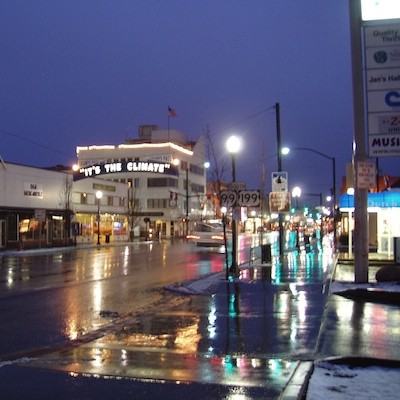
8.
Grants Pass
Median Household Income: $33,165
Population: 34,672
The city is the county seat of Josephine County in Southern Oregon. Grants Pass was known for its strong timber trade, but now tourism is one of its biggest economic draws. Its location on the Rogue River helps bring vistors from around the state.
Photo Credit: Nicolas from Paris, France via Wikimedia Commons (image cropped)
-
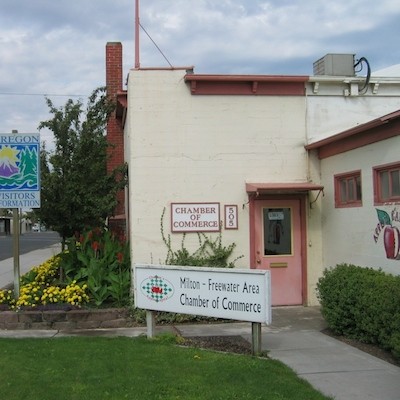
7.
Milton-Freewater
Median Household Income: $33,086
Population: 7,066
In the far corner of northeastern Oregon, Milton Freewater is part of the Walla Walla Valley, and is well known for its agriculture.
Photo Credit: Bobjgalindo via Wikimedia Commons (image cropped)
-

6.
Winston
Median Household Income: $32,232
Population: 5,359
Winston is located in the southern part of Douglas County. Its biggest tourist attraction is the wildlife park WildLife Safari, which attracts around 150,000 people every year.
Photo Credit: Visitor7 via Wikimedia Commons (image cropped)
-

5.
Klamath Falls
Median Household Income: $31,990
Population: 2,1026
The southern Oregon city will host the 2015 Babe Ruth World Series at the historical Kiger Stadium.
Photo Credit: Bobjgalindo via Wikimedia Commons (image cropped)
-
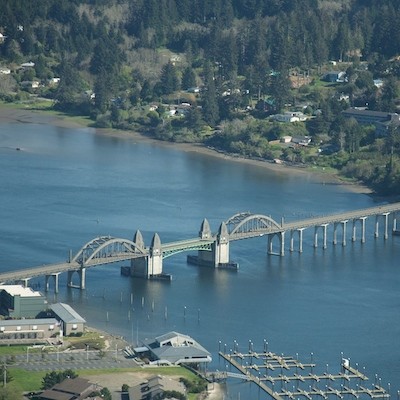
4.
Florence
Median Household Income: $31,812
Population: 8,463
The costal city Florence hosts the Rhododendron Festival, the second-oldest flower festival in Oregon and third-oldest on the West Coast, which brings tourists from all over the state.
Photo Credit: Sam Beebe via Wikimedia Commons (image cropped)
-
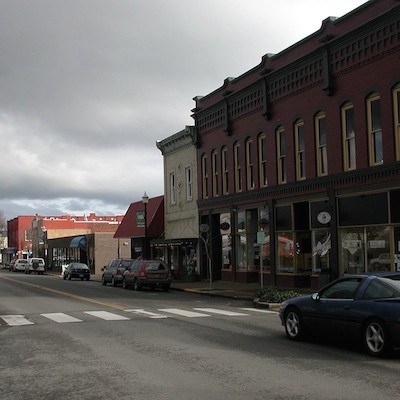
3.
Monmouth
Median Household Income: $31,582
Population: 9,687
Set off Highway 99 just south of Salem, Monmouth is home to Western Oregon University. The university serves many first-generation students and has received national recognition for its achievements in helping students.
Photo Credit: ABy Finetooth via Wikimedia Commons via Wikimedia Commons(image cropped)
-
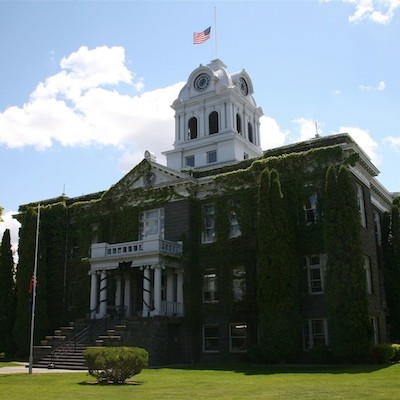
2.
Prineville
Median Household Income: $29,959
Population: 9,241
Prineville is in Central Oregon, next to the Ochoco National Forest. The Prineville-Crook County Chamber of Commerce is the oldest in Central Oregon, formed in 1919. Almost half of all business in Crook County are members of the Chamber.
Photo Credit: Cacophony via Wikimedia Commons (image cropped)
-
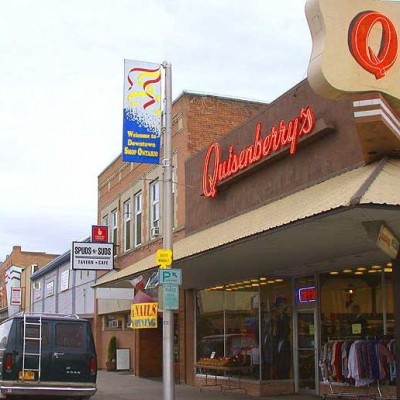
1.
Ontario
Median Household Income: $25,455
Population: 11,227
Pulitzer Prize winning American children’s author and poet Phyllis McGinley, was born in Ontario, Oregon.
Photo Credit: Matthew Trump via Wikimedia Commons
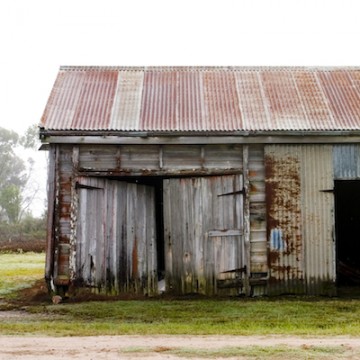 The wealthiest cities in Oregon are concentrated in the suburbs surrounding Portland, while the state’s lowest-income communities are spread throughout rural southern and eastern counties, according to the most recent data from the U.S. Census Bureau.
The wealthiest cities in Oregon are concentrated in the suburbs surrounding Portland, while the state’s lowest-income communities are spread throughout rural southern and eastern counties, according to the most recent data from the U.S. Census Bureau.
_(desD0054b)_400_400_90.jpg)





























_400_400_90.jpg)








 Delivered Free Every
Delivered Free Every
